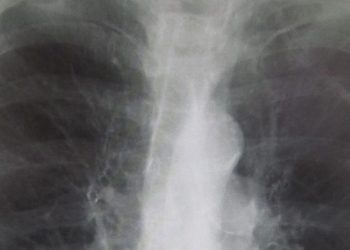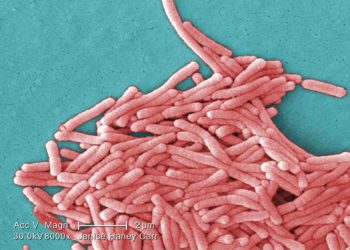Substantial differences seen in antibiotic use among non-EU European countries
Image: PD
1. Among the 12 non-EU European countries plus Kosovo, antibiotic use varied significantly, with a nearly threefold difference among the participating countries.
2. Parenteral administration of antibiotics was comparatively high in the newly independent states.
Evidence Rating Level: 2 (Good)
Study Rundown: Antibiotic resistance is a real threat to public health. Prior to the current study, knowledge on antibiotic use from non-EU European countries was scarce. In the current study, Versporten et al. collected such data in order to help establish permanent surveillance systems for continued monitoring. The study found that antibiotic use varied greatly among the participating countries, with the lowest use in Armenia and the highest use in Turkey. Of note, Turkey used nearly three times as much antibiotics per capita as Armenia. The classes of antibiotics used also differed greatly among the states. These discrepancies underline the need for further monitoring and reform of antibiotic use in the surveyed regions. The study used standardized methods developed by the WHO to survey antibiotic use. The use of wholesale data as opposed to reimbursement data also had the added benefit of providing a more accurate picture that included over-the-counter abuse.
The study was funded by the Netherlands Ministry of Health, Welfare and Sport, and EU.
Click to read the study, published today in The Lancet
Relevant Reading: The usage of antibiotics in Russia and some countries in Eastern Europe
In-Depth [cross-sectional study]: This study assessed the level of antibiotic use in non-EU European countries. The investigators collected data on antibiotic use from 13 countries, 7 of which were newly independent. The study measured antibiotic use according to the WHO anatomical therapeutic chemical (ATC)/defined daily doses (DDD) method. The results were expressed in DDD/1000 inhabitants per day (DID).
In terms of total antibiotic consumption, Turkey used the most antibiotic per capital, with a DID of 42.3. The lowest per capita use was in Armenia, with a DID of 15.3. The top five antibiotic users in DID terms were: Turkey, Montenegro, Tajikistan, Kosovo and Serbia.
Penicillins (ATC group J01C) were the most commonly used in all countries, with the highest proportional use of penicillins reported in Georgia (67.6%; 14.2DID) and Azerbaijan (65.9; 11.4 DID). However, narrow spectrum penicillin use was low throughout the region, with the highest use reported in Montenegro (1.3 DID). Total cephalosporin (ATC group J01D) use was highest in Turkey (14.1 DID) and lowest in Azerbaijan (0.8 DID). Total macrolide (ATC group J01FA) and lincosamide (J01FF) use was highest in Montenegro (6.1 DID) and Serbia (5.0 DID), and lowest in Tajikistan (0.7 DID). Quinolone (J01M) use was highest for Montenegro (4.4 DID) and lowest for Azerbaijan (0.7 DID).
More from this author: Local excision inferior to major resection in T1-2 colon cancer and T2 rectal cancer, Secondary mastoid obliteration improves quality of life for patients with chronic otitis media, Healthcare reform linked with reduced racial disparities in surgical care, VATS lobectomy may be preferred in COPD with non-small-cell lung cancer, One-on-one training leads to improved virtual reality laparoscopic performance
©2012-2014 2minutemedicine.com. All rights reserved. No works may be reproduced without expressed written consent from 2minutemedicine.com. Disclaimer: We present factual information directly from peer reviewed medical journals. No post should be construed as medical advice and is not intended as such by the authors, editors, staff or by 2minutemedicine.com. PLEASE SEE A HEALTHCARE PROVIDER IN YOUR AREA IF YOU SEEK MEDICAL ADVICE OF ANY SORT.







